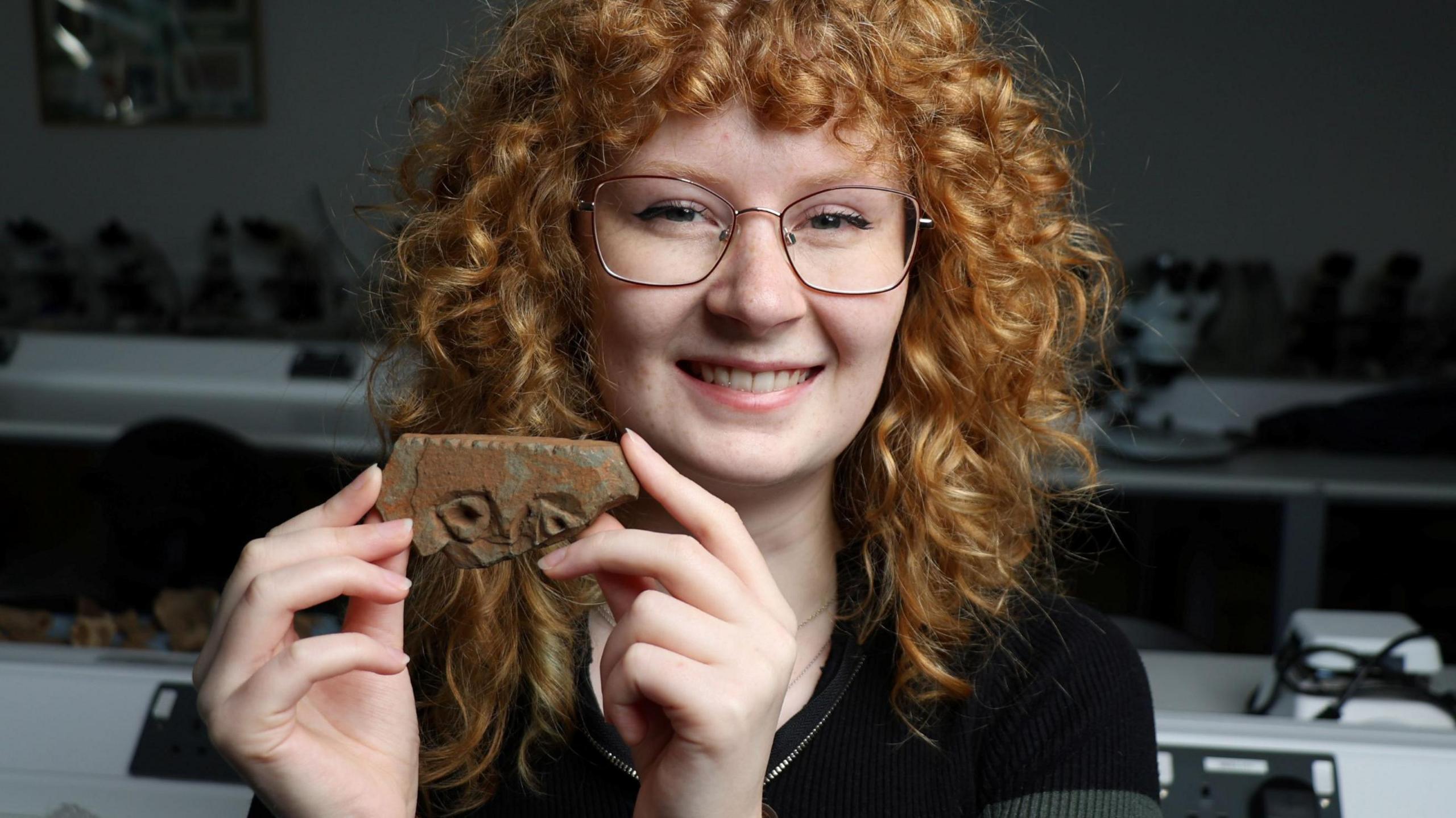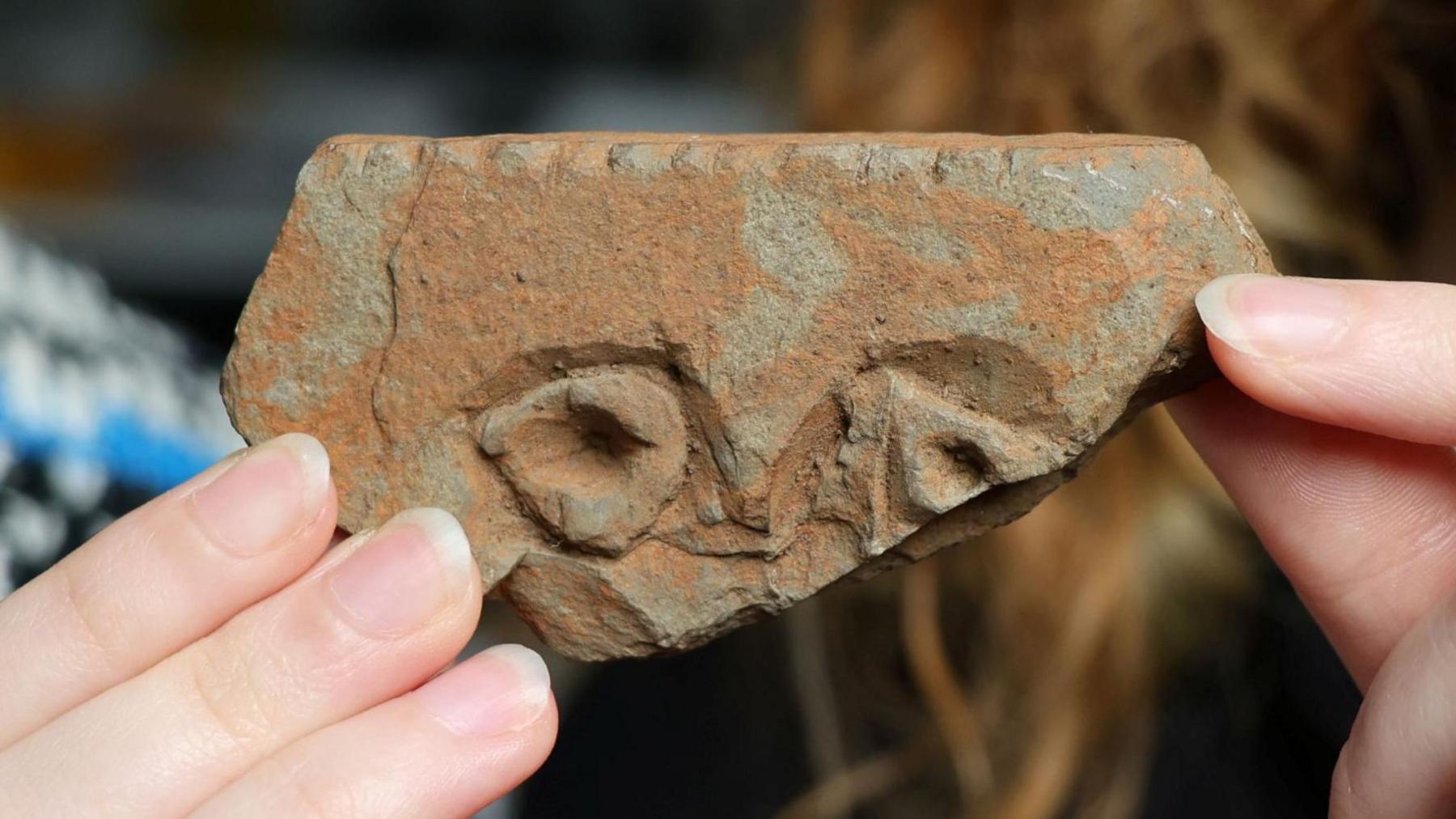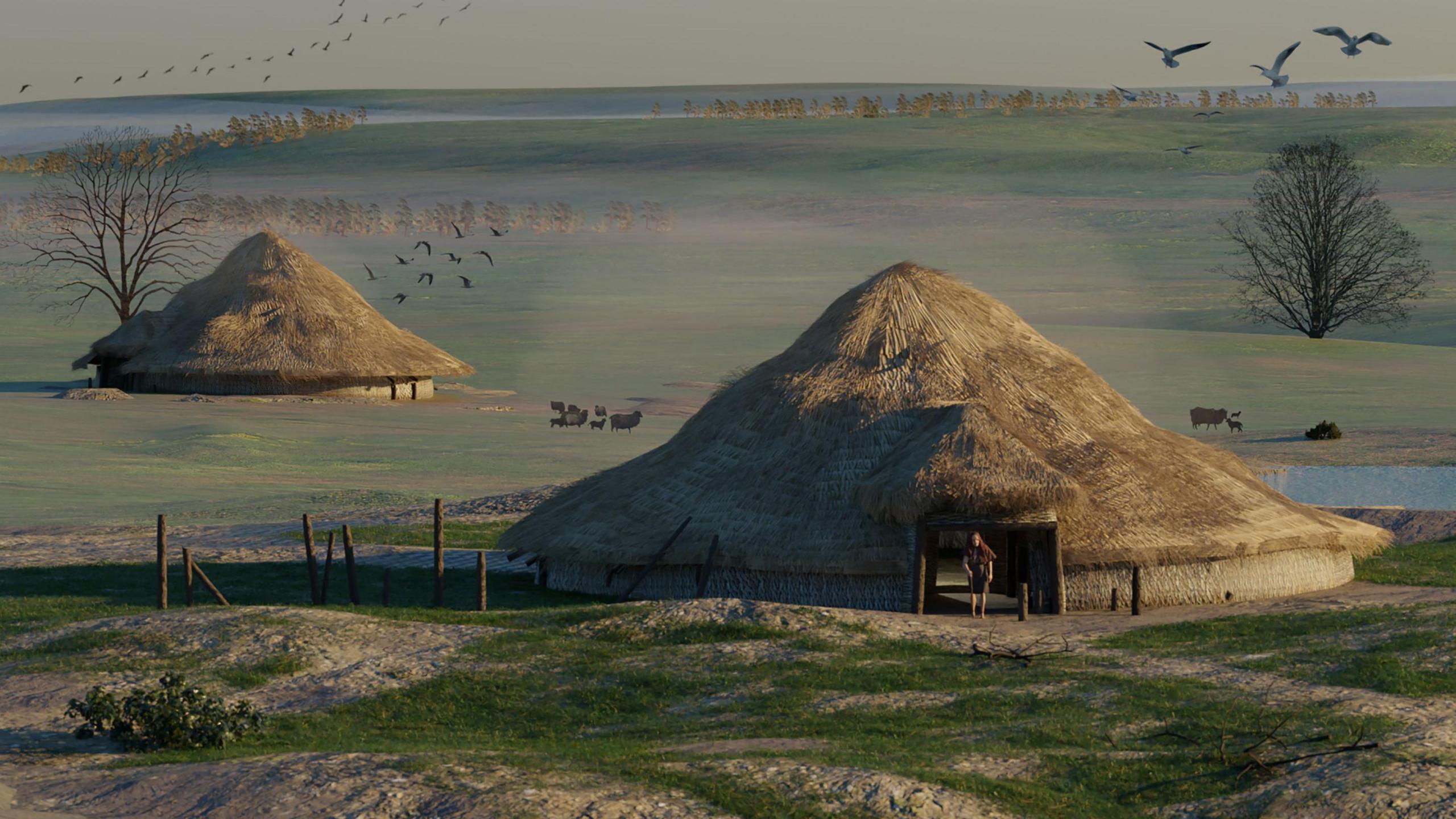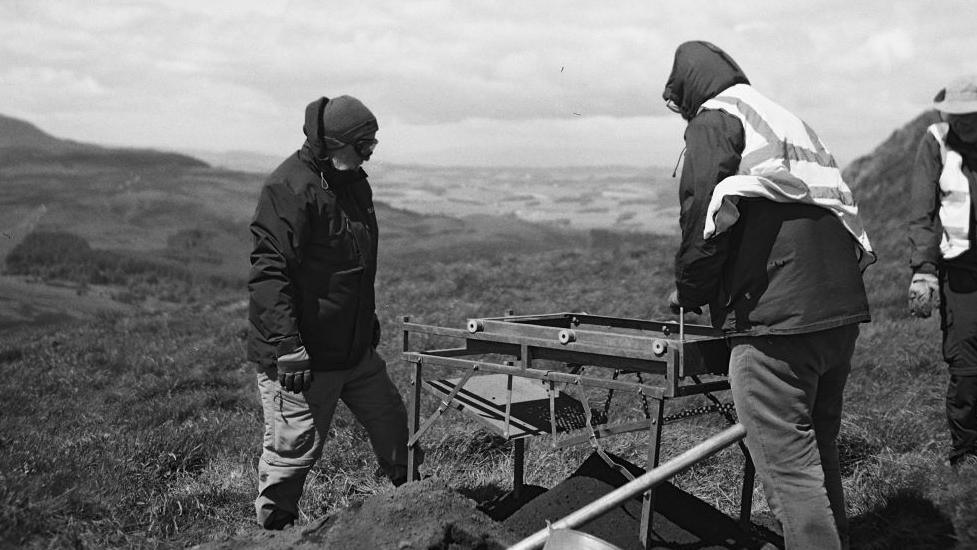Find could be 'incredibly rare' carving of a face

University of Aberdeen student Jodie Allan made the find at East Lomond, a hill in Fife
- Published
Archaeologists believe they may have unearthed an "incredibly rare" stone carving of the face of a person who lived in Fife more than 1,000 years ago.
University of Aberdeen student Jodie Allan made the find while volunteering at an archaeological dig at an ancient hillfort at East Lomond, near Falkland.
Prof Gordon Noble, who helped lead the excavation, said the 12cm (5in) long object could be Pictish and appeared to have two eyes, a nose and a hairline.
He said: "If it really is a human face it's nice to think it could be a rudimentary portrait of a local Picts who lived at East Lomond."
Who were the Picts?
The word "Pict" comes from the Roman name "Picti". It was a term first used about 1,700 years ago during the Romans' occupation of the British Isles.
Based on archaeological evidence, the Picts inhabited parts of Scotland for about 600 years.
They are known for building hillforts and creating ornately carved standing stones.

Further analysis is to be done on the carving, which it is thought could be Pictish
Since 2022, archaeologists have been excavating a major settlement dating back to the Roman Iron Age and Pictish times on the southern slopes of East Lomond.
Falkland Stewardship Trust has been working with the University of Aberdeen at the site.
Ms Allan made her discovery while sieving soil excavated from an early medieval building.
She said: "I had no idea I was holding anything significant.
"But I took a closer look because of its size and because the colour – a sort of oxidised coppery green – caught my eye.
"I showed it to Prof Noble who took one look at the stone and his reaction told me it was something special – with what appears to be a carved face on it."
Prof Noble added: "We need to get this fully analysed but it appears to be a carving of a face, and resembles some of the human faces you see in early medieval manuscripts.
"It is incredibly rare to have a representation of a human face in this time period.
Related topics
- Published26 August

- Published25 August 2024
